St. Peter's visitable online: the Basilica's digital twin is born with Microsoft and AI
St. Peter’s Basilica, for centuries the spiritual heart of the Catholic world and an extraordinary artistic treasure, is going digital thanks to an ambitious project promoted by the Fabbrica di San Pietro in collaboration with Microsoft. The project, called The Basilica of St. Peter’s: AI-Enhanced Experience, allows anyone in the world to explore the Basilica through a "digital twin," a highly accurate three-dimensional model that faithfully reproduces every detail, even those not visible to the naked eye. This initiative, which combines advanced photogrammetry techniques and artificial intelligence, represents an important step for the enhancement and preservation of cultural heritage, setting a new standard for the digitization of historical and religious sites.
Strongly desired by Cardinal Mauro Gambetti, archpriest of the Basilica and president of the Fabbrica di San Pietro, this project aims to open the doors of the Basilica to the entire world, especially in view of the Jubilee of 2025. The decision to partner with Microsoft is part of a global accessibility plan to allow millions of people to experience St. Peter’s, including those who will not be able to travel to Rome for the Holy Year. The Basilica’s digital twin is not just a virtual representation, but a tool that allows people to rediscover every nook and cranny of one of the most symbolic places of Christianity, useful not only for those who want to know it, but also for those who want to protect it.
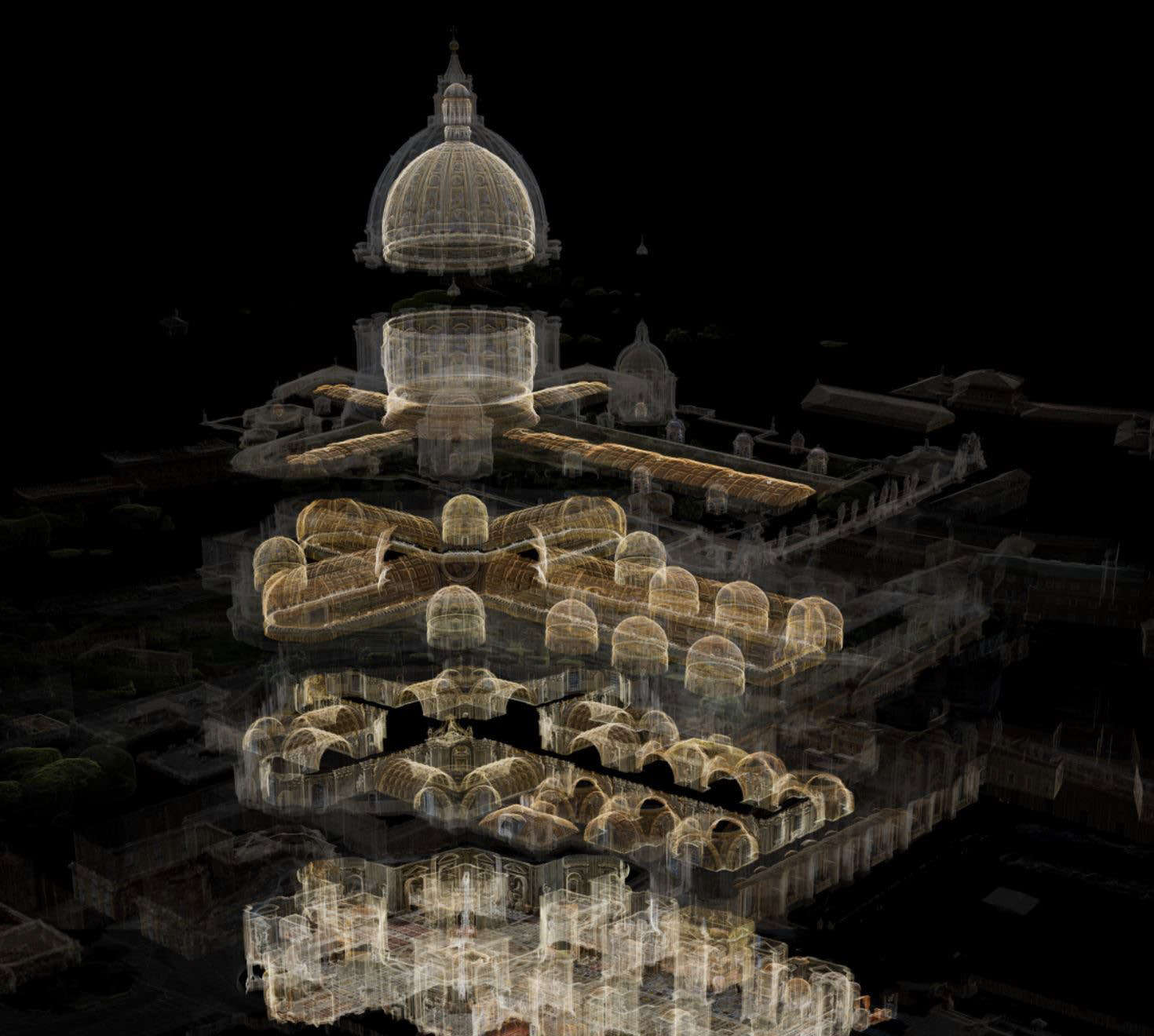
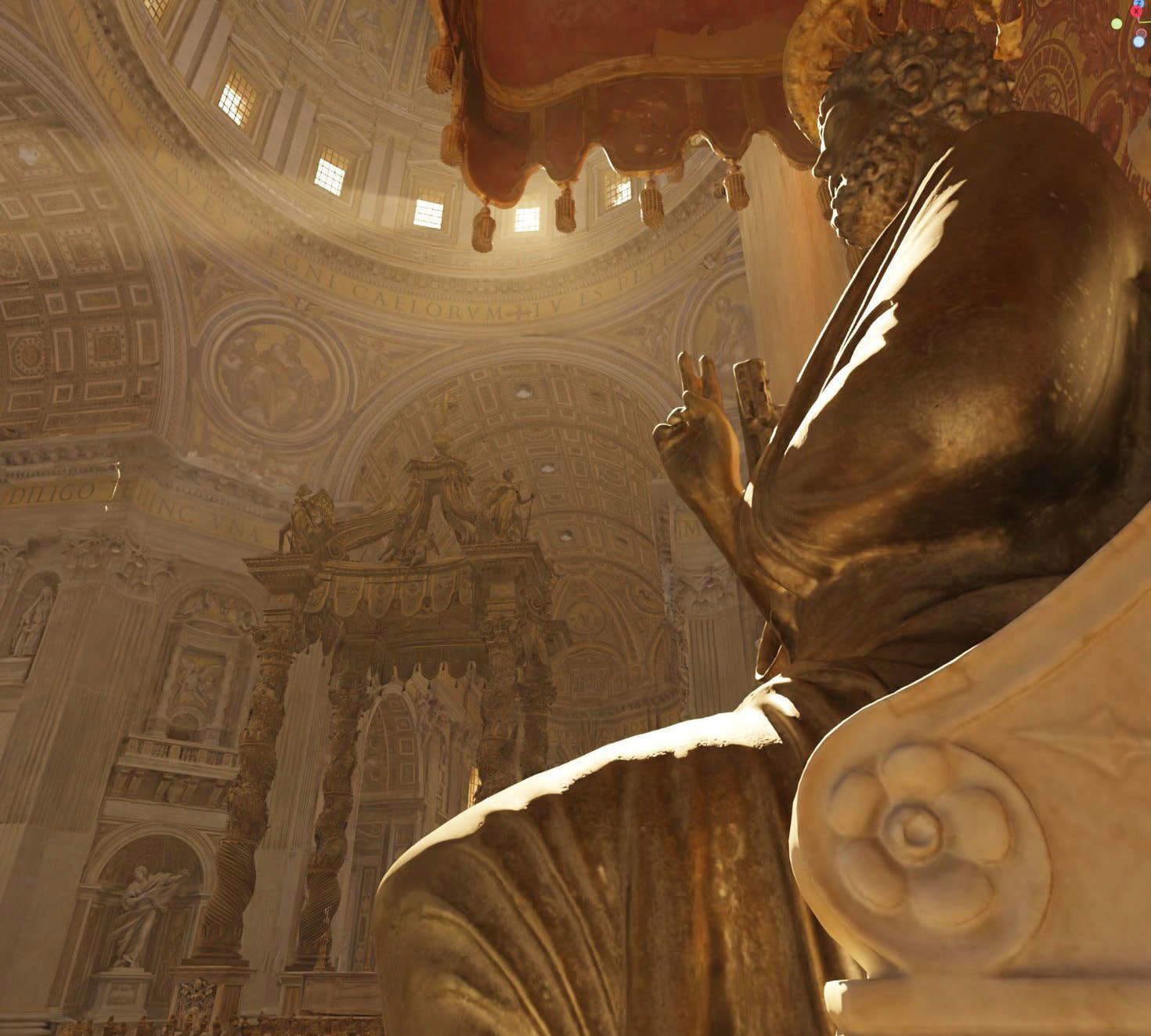
The genesis of the digital twin: three weeks of scanning and over 400 thousand images
The creation of the Basilica’s digital twin required a complex phase of data acquisition and processing. For three weeks, French company Iconem, which specializes in photogrammetry and digitization of historic sites, captured more than 400 thousand high-resolution images of the Basilica, using drones, lasers and cameras to capture every surface, angle and architectural detail. This immense photographic archive was then analyzed and refined by the Microsoft AI for Good Lab team, which processed the data with artificial intelligence to create a highly detailed three-dimensional model, filling in the gaps and improving the resolution so as to return a complete image of the Basilica, both inside and out.
The Fabric of St. Peter’s and Microsoft have also focused on cutting-edge technologies to visualize the digital twin. In order to offer users the highest possible resolution without overloading computer systems, a “dynamic tiling” technique was adopted that allows smooth and precise navigation of the 3D model, even in the presence of extremely complex details. This innovation marks a new standard for digital preservation of cultural heritage, which could be applied to other historic sites in the future to ensure the preservation of their visual memory.
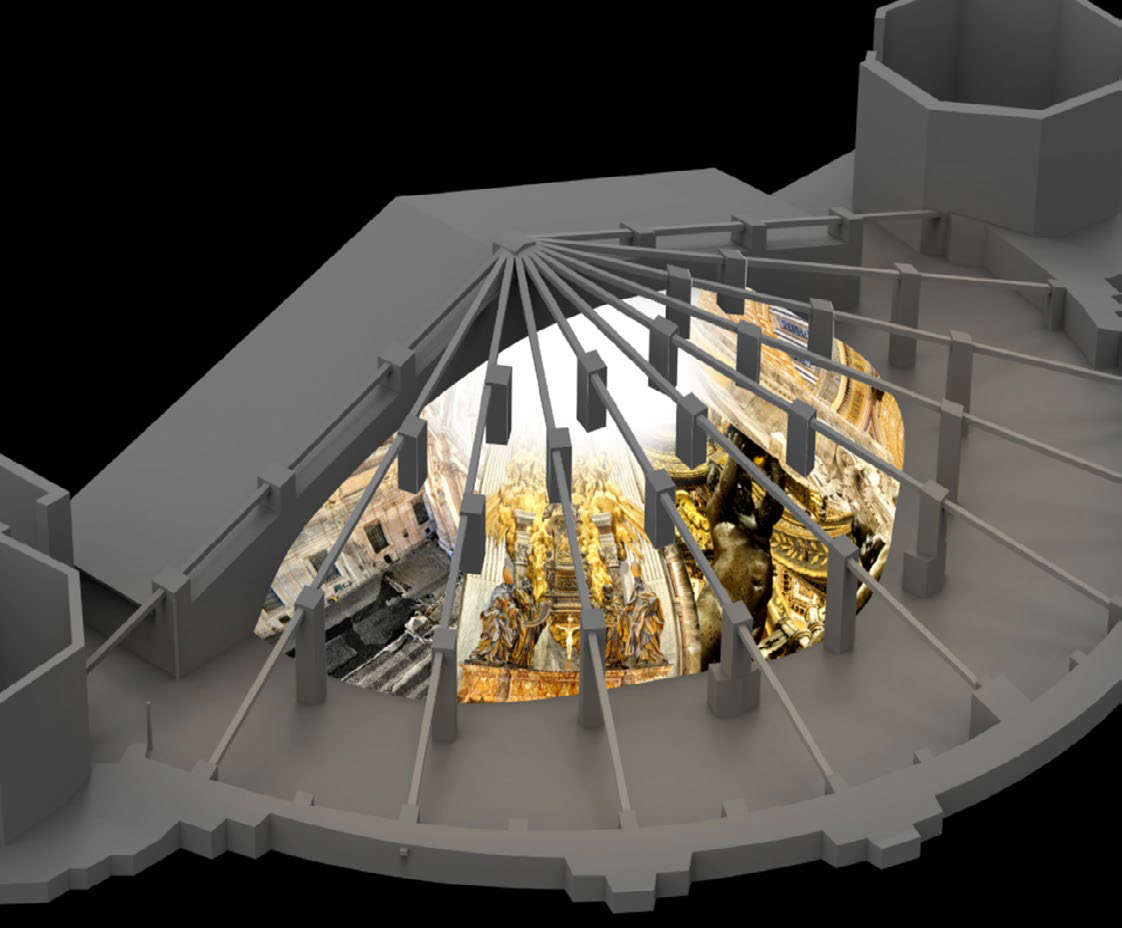
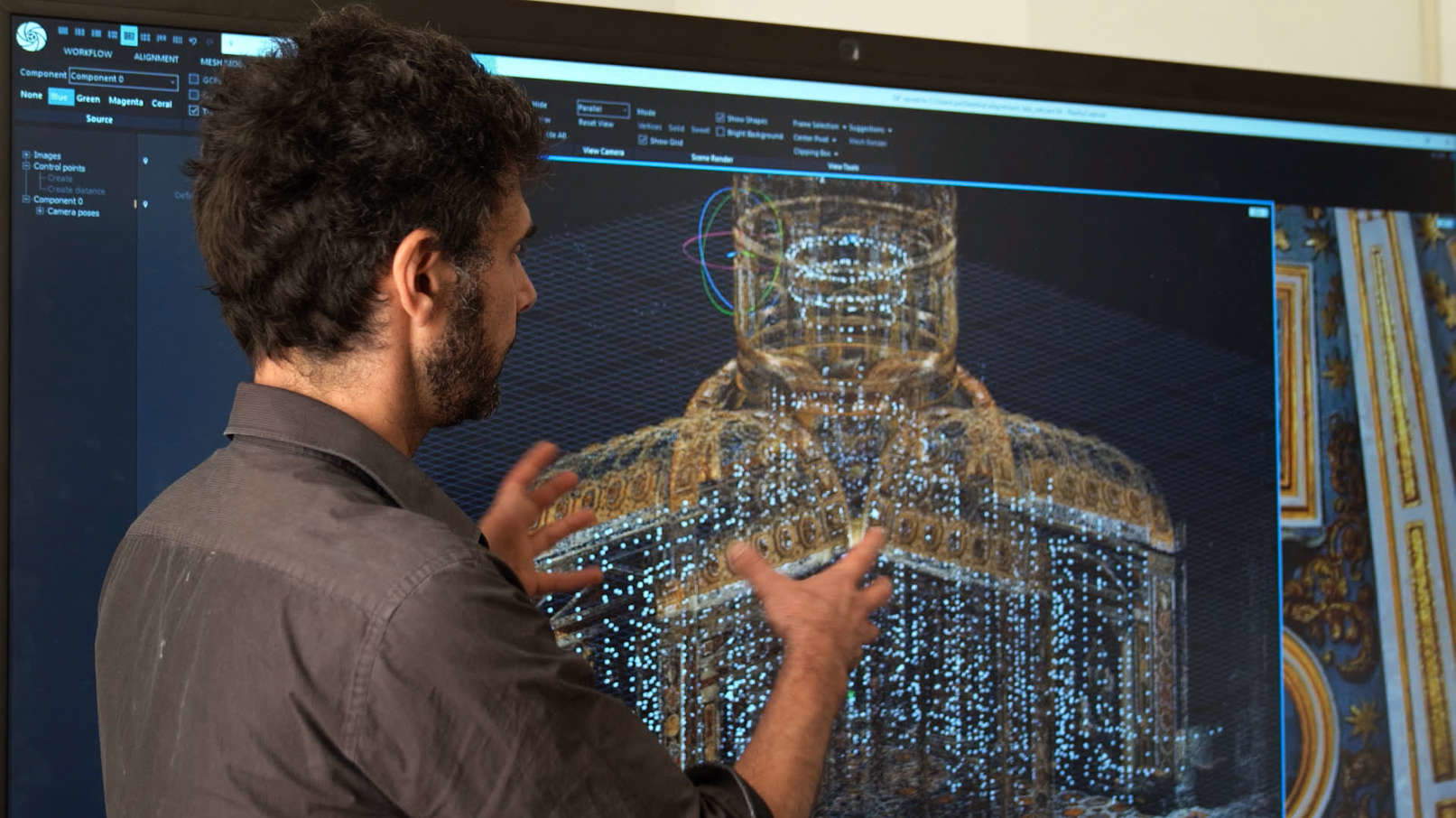
Digitization to aid conservation
A number of unexpected discoveries, such as missing mosaic tiles, cracks invisible to the naked eye and hidden architectural details, emerged during the digitization project, further enriching our knowledge of the Basilica and providing valuable information for future restoration. These include a ceiling decorated with colored bricks arranged in a spiral pattern in the Archimedean style, typical of the Roman period. This and other details will be able to be studied and deepened through digitization, helping to preserve and enhance the Basilica’s heritage.
In addition to offering a virtual exploration experience, the Basilica’s digital twin in fact plays a key role in the preservation of the historic site. Using artificial intelligence algorithms, the 3D model can detect potential structural vulnerabilities, such as cracks, damage and missing mosaic tiles. This information, detectable only through advanced tools, provides a detailed map of the Basilica’s state of conservation and is a valuable resource for restorers, enabling them to plan targeted interventions and prevent further deterioration. This is an important step forward for the protection of St. Peter’s, a site that is not only subject to deterioration but also faces challenges related to increased tourism and weathering.
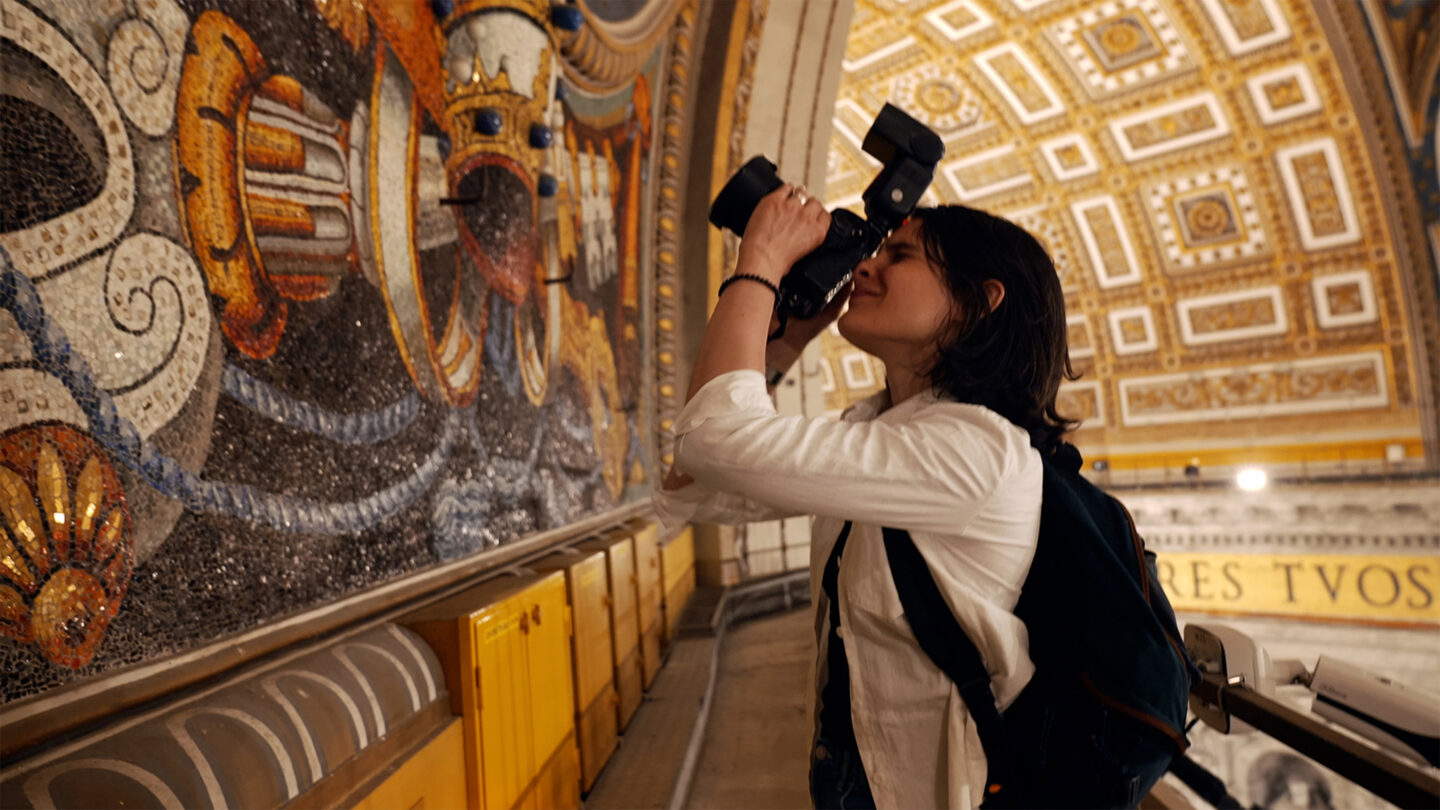
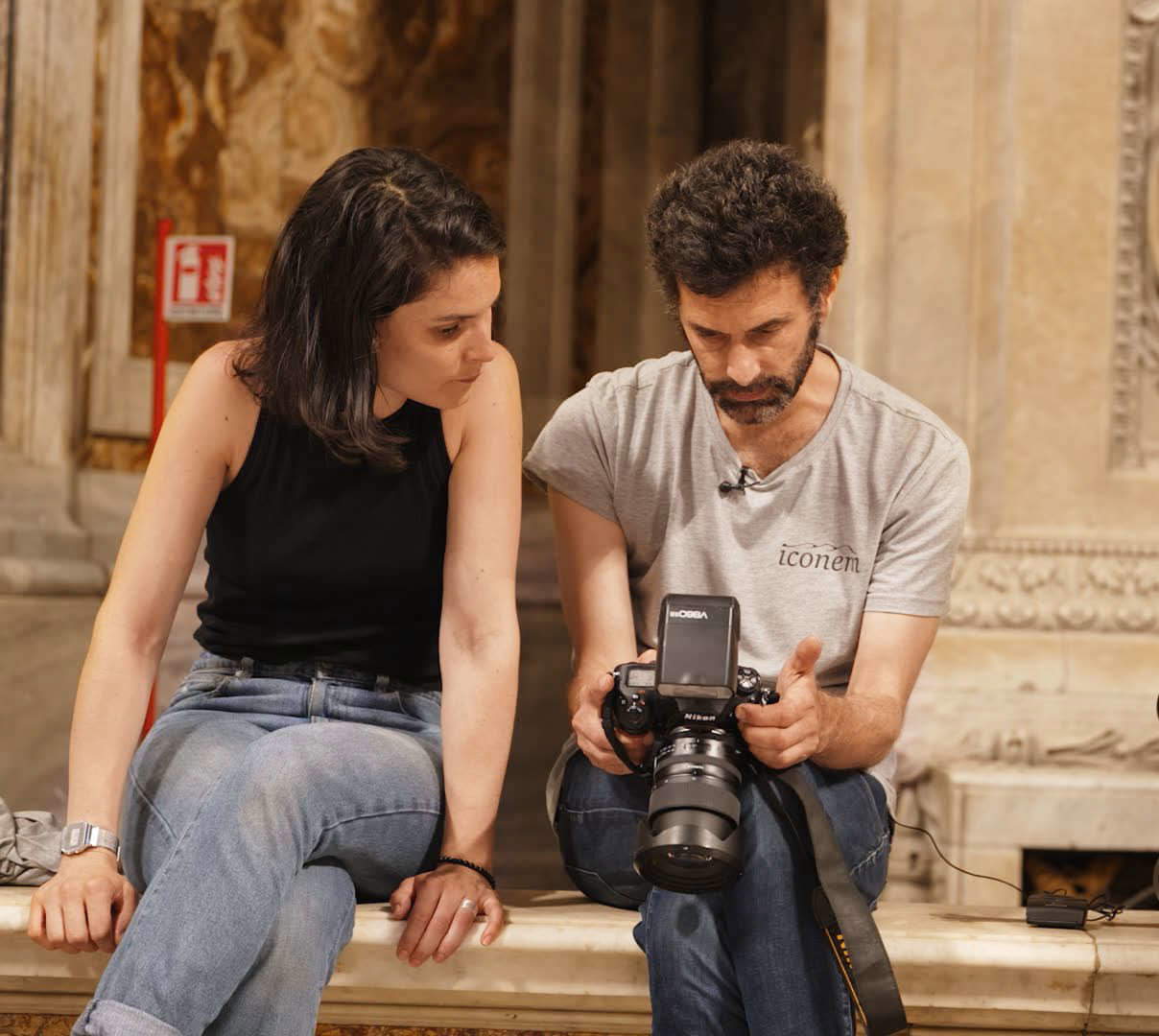
Petros Eni and Petros Eni Octagon: immersive exhibitions for Jubilee pilgrims
On the occasion of Jubilee 2025, two permanent, immersive exhibitions will be inaugurated inside the Basilica: Petros Eni and Petros Eni Octagon. Curated by Lithuanian design studio Dadada, these exhibits offer visitors the chance to explore the architectural and cultural history of the Basilica through an innovative path that combines physical and digital exploration. Thanks to artificial intelligence, it will be possible to discover the various construction phases and the changes that have taken place over the centuries, immersing oneself in an emotionally and visually stunning experience. The exhibitions also offer a unique educational experience, illustrating to visitors the evolution of the Basilica through the centuries, from the designs of Bramante and Michelangelo to the interventions of Maderno, Bernini and Canova.
The Basilica digitization project also includes the creation of an interactive website (virtual.basilicasanpietro.va) that allows anyone, anywhere in the world, to explore St. Peter’s virtually. Through detailed 3D models and educational content, the site offers users the chance to get up close and personal with the Basilica’s history, art and architecture, regardless of their geographical location. Teachers, historians, students and sacred art enthusiasts will thus be able to access a treasure trove of information and a unique experience that transforms St. Peter’s into a global educational resource.
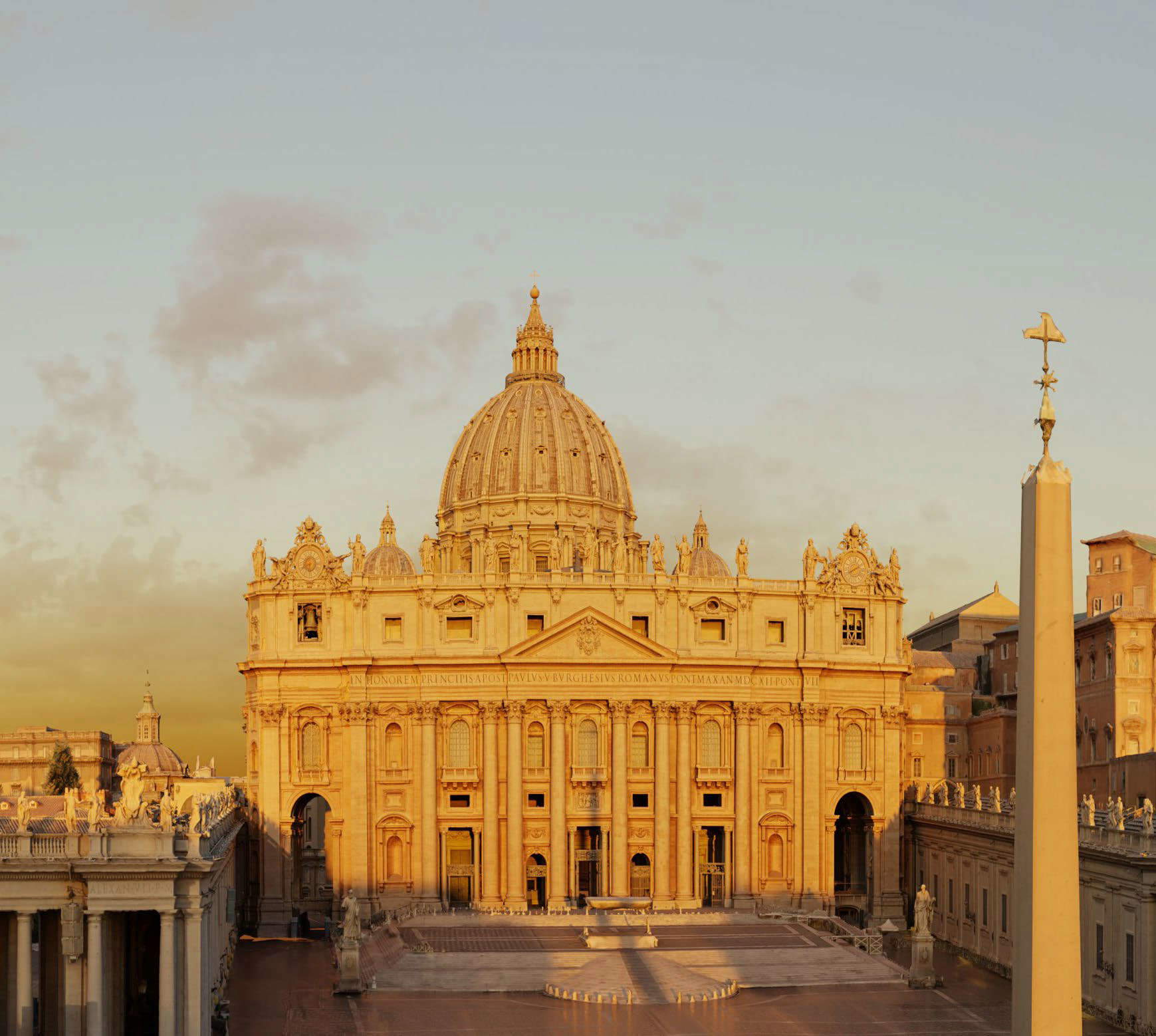
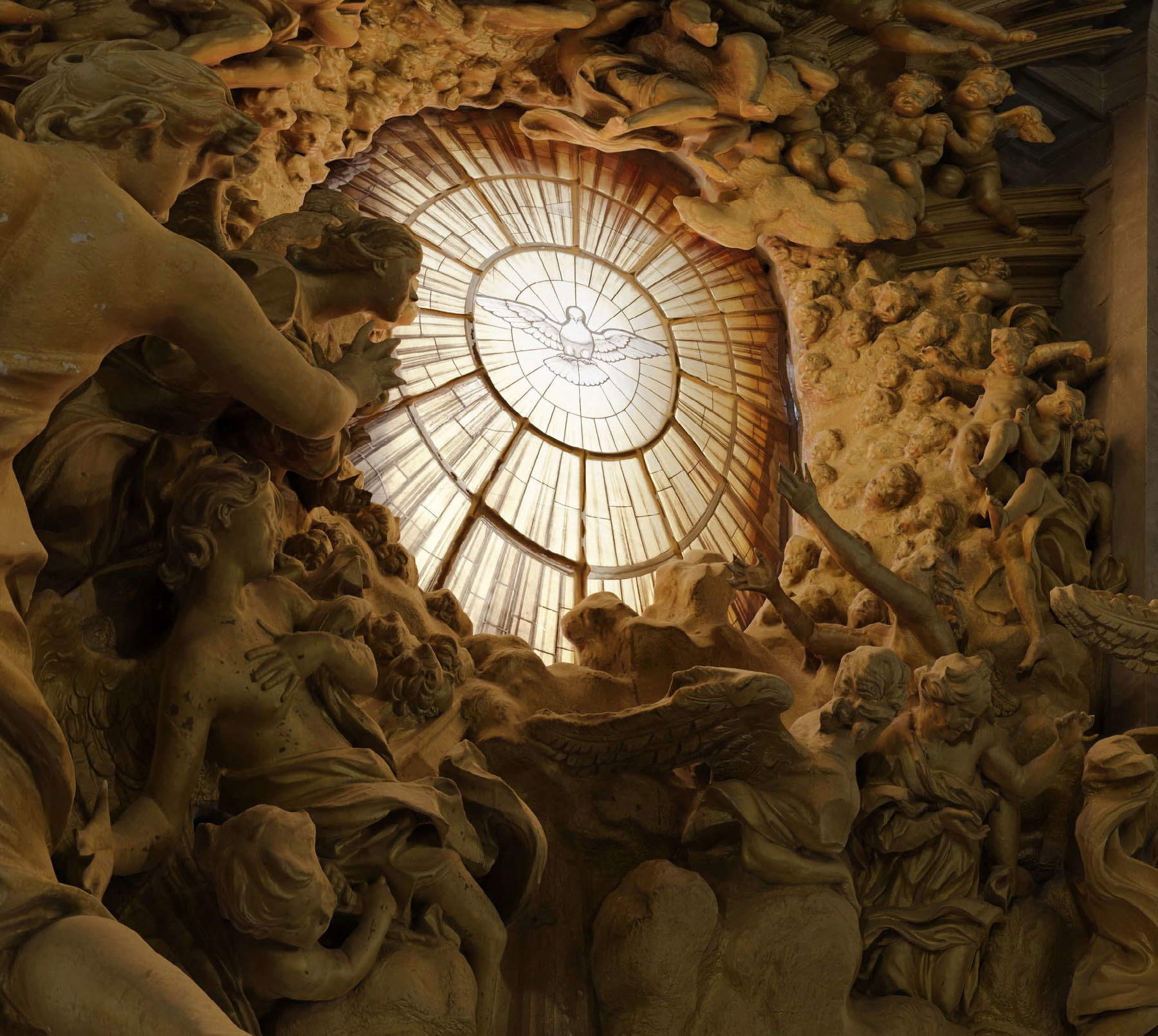
A global exploration experience for pilgrims and virtual visitors
The ability to explore St. Peter’s via its digital twin gives millions of people around the world, unable to physically reach Rome, the opportunity to visit the basilica. In addition, visitors can explore parts of the basilica that are not usually open to the public. The project is also intended to have a relevant educational impact: the digital model is also a powerful learning tool, enabling educators, historians and students from around the world to study the Basilica remotely. By making this resource globally accessible, it transforms St. Peter’s Basilica into a resor
Technological innovations applied to St. Peter’s Basilica then have lasting implications for both its preservation and its global audience. Indeed, the data collected from the imaging campaign are critical in guiding the Vatican’s long-term plans for the Basilica’s physical preservation.
“We have come to define a coordinated plan of services and communication activities for an ’outgoing Basilica,’” explains Cardinal Mauro Gambetti, archpriest of the Basilia and president of the Fabbrica di San Pietro. “In these years, not without effort, we have faced the splendid challenge of the relationship between man and technology with the spirit of fraternity, which has animated important collaborations marked by circularity, of skills, points of view and means, with the common goal of fostering the human growth of people. Thus, we were able to structure an information system for the Factory, put an Enterprise Resource Planning (ERP) at the service of the Offices, and start the computerization process of document, archival and human resources management; in addition, we implemented the first step of Building Information Modeling (BIM) of the Basilica. Then platforms and apps were created to offer services to pilgrims and visitors in order to facilitate their experience in St. Peter’s; and the meanings guarded by the monumental complex were made more understandable - through multimedia languages, the use of Artificial Intelligence and the proposal of training courses. In this sense, the effort is to decode for today’s man, with the help of digital technology, the interweaving of history, art and spirituality that make the Basilica unique in the world. After all, the Church has always been doing this, trying to communicate its faith in the divine through the languages of the time and cultural context to which it belongs.”
“Artificial intelligence allows us to view this Basilica in a unique and innovative way never seen before,” said Brad Smith, vice chairman and president of Microsoft. “This partnership, combining institutions and technological innovation, has created a memorable experience for all who want to delve into the history and significance of this extraordinary place.”
“When we have an inspiration, it’s as if a light goes on,” says Father Enzo Fortunato, director of communications at St. Peter’s Basilica. “And this project, I hope, will be able to turn on many lights in the world. So, with the Basilica in the digital space, a new process of communication begins, with a new work of art that continues on the path of those who have worked on the beauty of the message that starts from the heart of Christianity. On November 25 we will present, together with the Cardinal Archpriest, in accordance with the relevant bodies, the communication plan for St. Peter’s Basilica.”
“We were animated by a desire that is not simply aesthetic or related to a technological innovation,” explains Microsoft project coordinator Father Francesco Occhetta. “Many people are looking for a sacred space where they can find themselves before God, and the digital reconstruction of the Basilica will be able to help this encounter in every corner of the world. For this reason, this 3D vision reconnects the sacred architecture to the body of St. Peter and is an extension of it.”
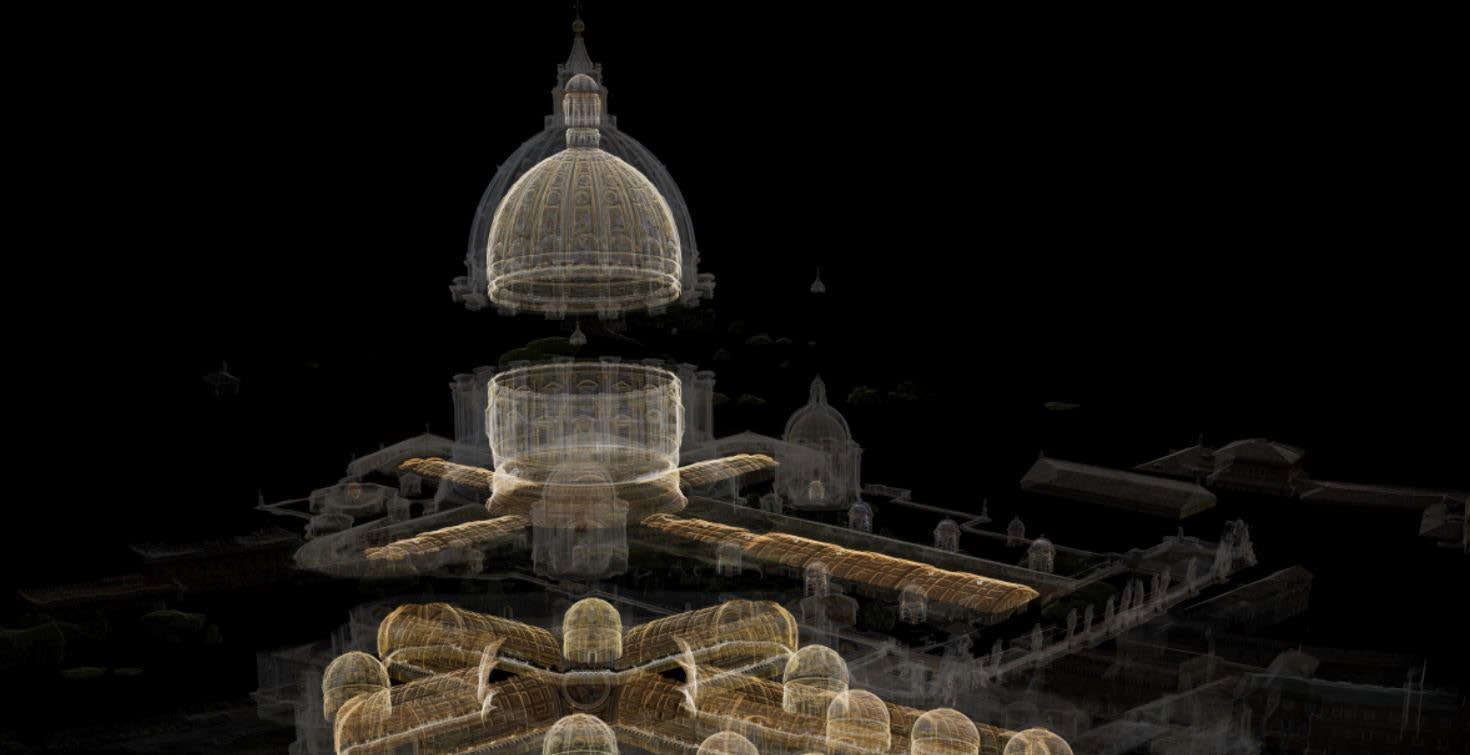 |
| St. Peter's visitable online: the Basilica's digital twin is born with Microsoft and AI |
Warning: the translation into English of the original Italian article was created using automatic tools. We undertake to review all articles, but we do not guarantee the total absence of inaccuracies in the translation due to the program. You can find the original by clicking on the ITA button. If you find any mistake,please contact us.





























